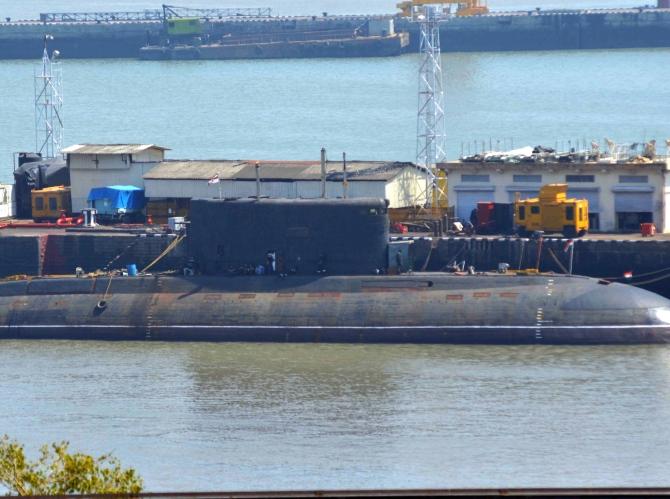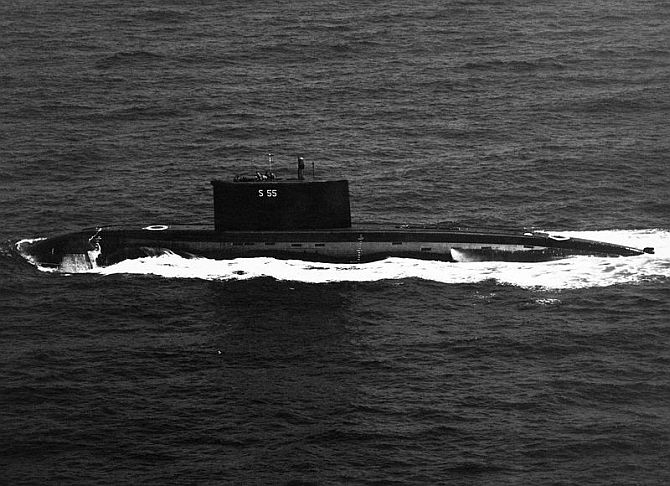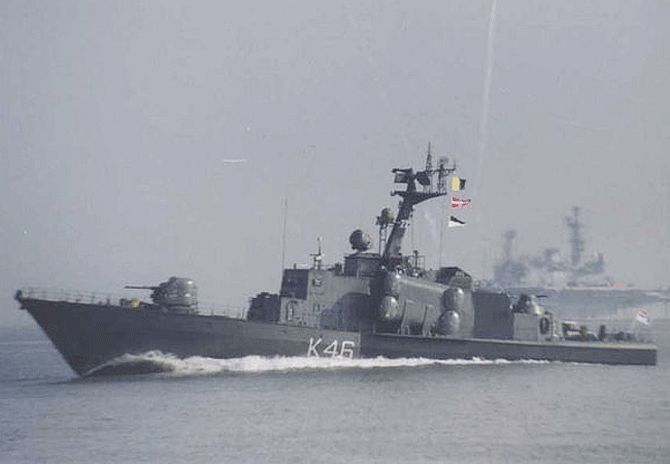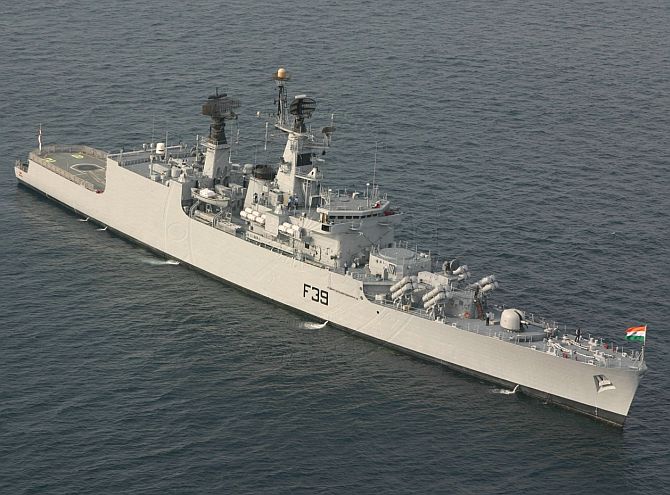Photographs: Sahil Salvi Ajai Shukla
Media reports had speculated that expired batteries caused the fire on board the Russian Kilo-class submarine
The navy announced on Tuesday the fire that killed two officers and injured seven sailors on board the submarine, INS Sindhuratna, on February 26, did not originate from the submarine's batteries, but probably from cables that caught fire in the sailors’ living section. The navy also clarified the submarine's batteries were within their specified service life.
Media reports had speculated that expired batteries caused the fire on board the Russian Kilo-class submarine. Calls for the defence minister's resignation have blamed him for procurement delays that forced submariners to operate with expired batteries.
The navy conclusively denied that on Tuesday.
Read more defence stories HERE
"The batteries presently installed on Sindhuratna have, till date, completed about 113 cycles against 200 cycles available for exploitation. Further, the life of the batteries is valid by date (stipulated life of four years, by OEM). The batteries which were being exploited by Sindhuratna at the time of incident were therefore operationally in-date," the navy stated on Tuesday.
Business Standard has learnt that INS Sindhuratna was functioning with batteries that belonged to a sister submarine, INS Sindhukesari, undergoing a maintenance refit in the dockyard. Those batteries were cleared to operate till May 2014.
...
INS Sindhuratna: Tale of an underwater tragedy
Image: The INS Sindhughosh which ran aground at the naval harbour in Mumbai in January this yearAjai Shukla
The navy has also announced, based on a "preliminary assessment of damage", the fire was probably caused by cables that caught fire on the mess deck, located one floor above the "battery pit", where batteries are stored. This assessment is based on an examination by specialists of the Western Naval Command, after Sindhuratna returned to Mumbai on Thursday, a day after the fire.
"Preliminary inspection of the third compartment, thus, indicates that the fire emanated from the third compartment mess deck (sailor's accommodation)," says the navy.
Adding: "Preliminary inspection of the battery pit and the batteries therein has been undertaken and no damage observed thus far. Further, there are no signs to indicate any initiation of fire from the battery pit. The batteries appear to be clear of any damage and would now be put through normal checks and maintenance routines prior (to) operationalisation."
...
INS Sindhuratna: Tale of an underwater tragedy
Image: The INS VipulAjai Shukla
According to senior naval officers who reconstructed the emergency for Business Standard, it began when sailors in the sleeping compartment saw smoke emanating from cables running along the wall, and raised the alarm.
Within seconds, the billowing smoke had choked a number of sailors, since the fire was consuming precious oxygen from the submarine's restricted internal space.
Two electrical officers in another compartment, Lieutenant Commander Kapish Muwal and Lieutenant Commander Manoranjan Kumar, rushed to the sailors compartment. After quickly establishing that the battery compartment underneath was in order, they began evacuating the choking sailors.
With the smoke spreading and threatening to consume all the oxygen, which would have killed the entire crew and caused the loss of the submarine, the captain ordered the affected compartment to be sealed, to localise the fire. That was successfully done but a quick head count found the two officers missing.
...
INS Sindhuratna: Tale of an underwater tragedy
Image: Warship INS Betwa was detected with hairline fracture in its dome that resulted in ingress of sea water into the systemAjai Shukla
Repeated attempts were made to open the smoke-filled compartment and rescue the officers if they were still alive but each time the door was opened, the cables reignited. Eventually, the two officers' bodies were discovered when the compartment was opened in Mumbai. It remains unclear how the cables caught fire. The navy has set up a Board of Inquiry, headed by a two-star admiral, to establish the cause.
Senior officers are deeply concerned a witch-hunt to pin the blame on someone would create a "zero-error syndrome", where warship captains are reluctant to take the slightest risk.
Click on NEXT for more...
INS Sindhuratna: Tale of an underwater tragedy
Ajai Shukla
These officers say the navy operates over 160 ships, typically clocking over 12,000 ship days at sea every year, in various waters and weather.
They point out that, in these demanding conditions, some mishaps are to be expected for reasons varying from operational hazard to material failure, equipment malfunction or human error.
"Ships sometimes collide, desks never do," said a well-regarded admiral tersely.
Click on NEXT for more...






article